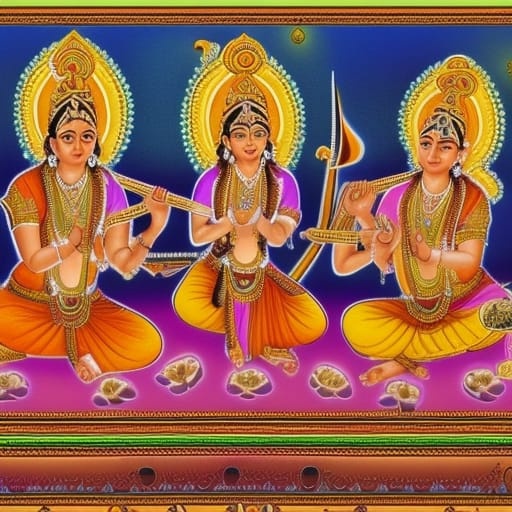GANDHARBA (GANDHARVA) NAGARI They are in maze on seeing a mirage and abide in Gandharva Nagari (Utopia). They only seem bedecked in their mind and body, who meditate on Truth. (Shalok M. 5, p. 1425) The Gandharvas generally had their dwelling in the sky or atmosphere. Their abode is thus considered a mirage. It is equivalent to Harchandauri. See : Harchandauri
References :
1. Kohli, Surindar Singh (ed), Dictionary of Mythological References in Guru Granth Sahib, 1993
Gandharva Nagari in Hindu Mythology and Quotes in Guru Granth Sahib
Gandharva Nagari, or the “City of Gandharvas,” is a fascinating concept in Hindu mythology that embodies illusion and impermanence. Gandharvas are celestial beings known for their musical and artistic prowess, often depicted as inhabitants of heavenly realms. The term Gandharva Nagari metaphorically represents the transient nature of worldly pleasures and achievements. This idea resonates with the teachings found in the Sikh scripture, Guru Granth Sahib, emphasizing the impermanence of material wealth and the eternal truth of spirituality.
Gandharva Nagari in Hindu Mythology
In Hindu mythology, the Gandharvas are celestial beings who act as messengers between gods and humans. They are renowned for their musical talents and are often associated with the divine arts. Gandharva Nagari is described in some texts as a mystical city that embodies the allure of illusion. It represents a fleeting, dream-like existence that tempts humans but ultimately reveals the ephemeral nature of worldly pleasures.
The concept of Gandharva Nagari serves as a reminder that material pursuits and attachments are insubstantial and temporary. Legends involving Gandharvas often illustrate the dangers of being seduced by illusion and the importance of seeking higher spiritual truths.
Quotes in Guru Granth Sahib
The Guru Granth Sahib frequently uses metaphors of illusion to convey the impermanence of worldly life. While Gandharva Nagari is not explicitly mentioned in the scripture, its essence aligns closely with the Sikh teachings on maya (illusion) and detachment.
For example:
- The scripture emphasizes that wealth, beauty, and worldly achievements are like fleeting mirages, urging followers to focus on the eternal reality of God.
- It reminds devotees that chasing illusions leads to spiritual emptiness, while true fulfillment comes from devotion and remembrance of the Divine.
These teachings highlight the parallel between the metaphor of Gandharva Nagari in Hinduism and the concept of maya in Sikhism, both pointing to the ultimate truth of spiritual realization.
Shared Philosophical Insights
The symbolism of Gandharva Nagari bridges Hindu mythology and Sikh spirituality by reminding humanity of the transient nature of material pursuits. It serves as a call to rise above illusion and dedicate oneself to the eternal truth, fostering a life of wisdom, devotion, and spiritual fulfillment.






